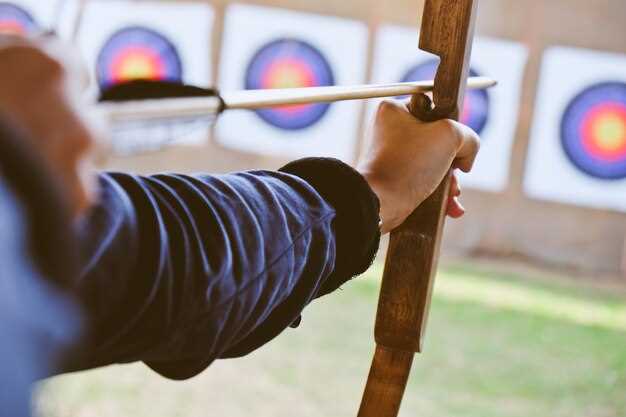
When it comes to archery hunting, the importance of effective concealment cannot be overstated. A well-positioned ground blind can make the difference between a successful hunt and a missed opportunity. Choosing the right location and properly setting up your blind are crucial steps that require careful consideration and planning.
First and foremost, the purpose of a ground blind is to provide you with concealment from your target. This not only helps in keeping you hidden from the eyes of wary game but also allows you to observe their behavior without alarming them. The ideal blind should blend seamlessly into the environment, utilizing natural materials and the terrain to mask its presence.
To ensure maximum effectiveness, it is essential to scout the area before setting up your blind. Look for signs of animal activity, such as tracks or droppings, and choose a location that offers a clear line of sight for your shot. Additionally, consider the wind direction, as this can significantly impact your scent dispersal and the animals’ awareness of your presence.
In conclusion, setting up a ground blind for archery success is a strategic process that enhances your chances in the field. With the right approach to concealment and careful planning, you can create an effective hide that optimizes your hunting experience.
Selecting the Right Location for Your Ground Blind

Choosing the optimal location for your ground blind is crucial for archery success. The right spot can significantly increase your chances of encountering game, while a poor choice can lead to frustration and wasted time.
First, consider the movement patterns of your target species. Study the areas where they frequently travel, feed, and rest. Look for natural corridors, such as trails, water sources, and feeding areas. Setting your ground blind near these locations can help position you for an effective shot.
Next, evaluate the wind direction. Ideally, your ground blind should be placed downwind from the area where you expect to see game. This will minimize the chance of your scent being detected, allowing you a better opportunity for a successful hunt.
Additionally, assess the surrounding vegetation. A ground blind that is well-camouflaged in natural cover can make a significant difference in avoiding detection. Trees, bushes, and tall grasses can all provide effective concealment, helping you remain hidden from the animals you are pursuing.
Finally, consider visibility. Ensure that your ground blind offers a clear line of sight to areas where game is likely to appear. However, avoid locations where your view is obstructed, as this could hinder your ability to take a shot when the opportunity arises.
In summary, selecting the right location for your ground blind involves careful observation of animal behavior, understanding wind patterns, utilizing natural cover for concealment, and ensuring visibility for effective shooting. Taking these factors into account will greatly enhance your archery success.
Techniques for Achieving Optimal Concealment
To maximize your chances of success in archery hunting, achieving optimal concealment with your ground blind is crucial. The first step is to select an appropriate location. Look for areas with natural cover, such as trees, bushes, or tall grass, that can help break up the outline of the blind. Positioning your blind near trails, water sources, or feeding areas can enhance its effectiveness by drawing animals into your shooting range.
Disruption of the blind’s appearance is essential. Using natural materials, like branches and leaves, to cover the blind not only helps it blend in but also allows you to create a more three-dimensional appearance. This technique disrupts the silhouette of the blind, making it less recognizable to passing wildlife. When adding these materials, ensure they are securely fastened to avoid movement that could alert nearby animals.
Sound is another factor that can compromise concealment. Choosing a blind that is constructed from noise-reducing materials can help minimize any sounds produced while you are inside. Additionally, practice moving quietly within the blind to avoid startling approaching game. Even minor rustling can break the illusion of concealment.
Lighting should also be considered when seeking concealment. Avoid positioning your blind in direct sunlight,as this can create shadows and reflections that can draw the attention of animals. Instead, opt for shaded areas to ensure that the blind remains inconspicuous. Natural dappled light can help further blend the blind into its surroundings.
Lastly, use scent control measures to enhance concealment. Animals rely heavily on their sense of smell, so eliminating human odors is vital. Employ scent-free products for your gear and clothing, and consider using scent-absorbing materials in and around your blind to mask any residual odors.
Essential Gear and Setup Tips for Archery Hunts

When preparing for an archery hunt, having the right gear is crucial for success. A high-quality ground blind can significantly enhance your chances of a successful shot. Choose a blind that is spacious enough to accommodate your movement while remaining compact and portable. Look for one that offers camouflage patterns to help blend into the environment, making it harder for animals to detect your presence.
In addition to the blind, ensure you have a comfortable chair or seat pad. Comfort is key during long waits, and a stable seat allows you to maintain focus on your target. A rangefinder is also an essential tool to measure distances accurately. Knowing the exact range helps you make more precise shots.
Don’t forget about essential archery gear, including your bow, arrows, and broadheads. Ensure your equipment is in good condition and suitable for the game you’re hunting. Practice your shooting before the hunt to familiarize yourself with your gear and improve your accuracy.
Setup tips for your ground blind include selecting the right location. Choose a spot with ample visibility and natural cover. Setting up near known animal trails or feeding areas can increase your chances of encounters. Once you’ve positioned your blind, use additional brush or branches to break up its outline and create a more natural appearance in the landscape.
Finally, enter and exit your ground blind quietly and at appropriate times to avoid spooking nearby wildlife. Be patient and remain still while inside the blind. With careful preparation and a well-set strategy, your ground blind can become a powerful tool on your journey to archery success.



